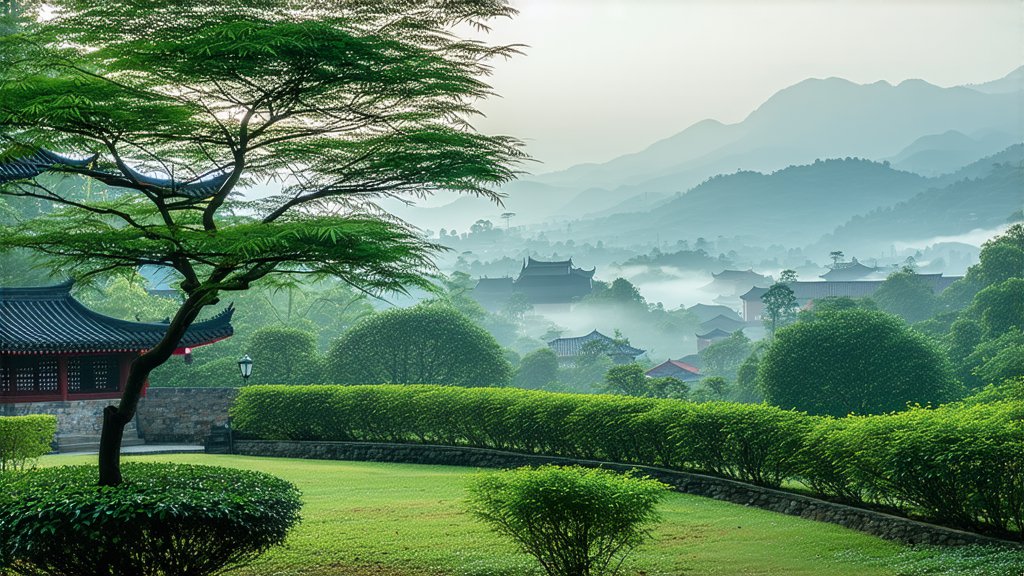
In the vast and diverse landscape of Chinese tea culture, few varieties captivate the senses quite like Baihao Yinzhen, a premium white tea that hails from the mountainous regions of Fujian Province. This exquisite tea, often referred to as "Silver Needle" for its distinctive appearance, stands as a testament to the artistry and tradition embedded within China's tea-making heritage. As we embark on this exploration, we will delve into the rich history, unique characteristics, meticulous production process, and nuanced appreciation methods that define Baihao Yinzhen.
Historical Roots and Cultural Significance
The origins of Baihao Yinzhen can be traced back to the early Qing Dynasty, around the mid-17th century. It is said that the tea was discovered by chance when tea farmers noticed the tender buds covered in fine white hairs (Baihao), which gave the tea its name. These buds were harvested and dried naturally, resulting in a tea that exuded a subtle sweetness and purity unmatched by other varieties. Over time, Baihao Yinzhen gained royal patronage and became a symbol of prestige, often reserved for imperial consumption and high-ranking officials. Its association with refinement and elegance has persisted through centuries, making it not just a beverage but a cultural icon in China.
Varieties and Classification
Baihao Yinzhen falls under the broader category of white teas, known for their minimal processing, which preserves the natural flavors and properties of the tea leaf. Unlike green or black teas that undergo extensive oxidation or rolling, white teas are simply wilted and dried, allowing them to retain their delicate character. Within the realm of white teas, Baihao Yinzhen is considered the pinnacle due to its use of only the finest young shoots and buds. These are carefully handpicked, ensuring that each one consists of a single bud accompanied by one or two young leaves, resembling a slender needle—hence the nickname "Silver Needle."
Crafting the Perfect Cup: The Art of Baihao Yinzhen Production
The journey from tea plant to cup for Baihao Yinzhen is a meticulous one, demanding both skill and patience. Harvest typically occurs in early spring when the first flush of buds appears, ensuring optimal freshness and quality. Here’s an overview of the traditional production process:
-
Plucking: Only the topmost buds and youngest leaves are selected. This labor-intensive process requires skilled hands to ensure minimal damage to the delicate shoots.
-
Withering: The freshly picked buds are spread out thinly on bamboo mats or screens under shade. They are left to wither naturally for about 24 to 72 hours, depending on weather conditions. During this period, the moisture content decreases while enzyme activity helps develop the tea's unique aroma and flavor profile.
-
Drying: After withering, the tea undergoes a gentle drying process, either in direct sunlight or using specialized drying equipment. This step further reduces moisture content without applying excessive heat that could alter the tea's natural qualities.
-
Sorting and Grading: Once dried, the tea is sorted meticulously to separate out any imperfections or foreign particles, ensuring only the highest quality Baihao Yinzhen reaches consumers.
Savoring Baihao Yinzhen: A Guide to Appreciation
To truly appreciate Baihao Yinzhen, one must adopt a mindful approach to brewing and tasting. Here’s how you can experience this tea at its best:
-
Brewing Equipment: Use a clear glass or porcelain teapot to allow for visual admiration of the tea's elegant dance in water. A gaiwan (lidded bowl) is also an excellent choice for controlled infusion.
-
Water Quality: Since Baihao Yinzhen is so delicate, using filtered or spring water is crucial. Avoid using tap water as it may contain chlorine or other contaminants that can detract from the tea's purity.
-
Temperature Control: Heat the water to approximately 80°C (176°F). Boiling water would scald the delicate leaves and ruin their flavor.
-
Leaf-to-Water Ratio: For a standard pot, use about 5 grams of Baihao Yinzhen per 200ml of water. Adjust according to personal preference and pot size.
-
Steeping Time: The initial steep should be brief, around 1-2 minutes, to extract the subtle flavors without bitterness. Subsequent infusions can be longer, as Baihao Yinzhen can withstand multiple steepings, revealing different facets of its character with each brew.
-
Observation and Reflection: As you pour the tea, notice its pale golden hue and the shimmering particles suspended in the liquid—a sign of its richness in amino acids and polyphenols. Inhale deeply before sipping to capture the tea's floral and fruity aromas. Let the tea rest gently on your palate, savoring its smooth texture and the lingering sweetness that follows.
Conclusion
Baihao Yinzhen embodies the essence of simplicity and elegance in Chinese tea culture. From its storied past to its intricate production process and refined taste, every aspect of this tea speaks volumes about the dedication and craftsmanship inherent in traditional Chinese tea making. For those seeking a tranquil moment of reflection or a glimpse into the depths of Chinese tea heritage, Baihao Yinzhen offers an unparalleled experience that transcends the ordinary. As you embark on your own journey with this remarkable tea, remember that each cup tells a story—one of ancient traditions, natural beauty, and the timeless art of tea.